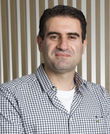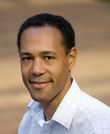
Dr Paul Ramsland
Vice Chancellor's Senior Research Fellow
School of Science
RMIT University
paul.ramsland@rmit.edu.au
Research Activities
Knowledge of the 3-D structure of individual proteins and their complexes with other proteins or small molecules (eg: inhibitors) is often crucial for understanding how these molecules perform their biological functions.Investigations are focused on solving crystal structures of antibodies, immune complexes and molecules that interact with the antibody portions of these immune complexes.The objectives of the Ramsland Laboratory are:
- To explore the structural biology of host-pathogen interactions, (pathogens are an agent – usually a microorganism – that cause a disease) particularly where immune system molecules are targeted by bacterial and viral ‘decoy’ proteins
- To develop structural approaches for the design of antibodies with improved efficacy for immunotherapy in human diseases like cancer
- To examine the structural and functional studies of recognition of carbohydrates and glycoproteins (structural glycobiology) in diseases and in the xenotransplantation setting (the process of transplanting organs from one species to another, especially from animals to humans).
- Crystal Growing: Protein samples are rapidly screened for initial crystallisation conditions. Crystals are optimised by fine screening of conditions and a variety of seeding techniques
- X-ray Structure Determinations: Protein crystals are subjected to X-ray diffraction analyses and the 3-D structures are determined experimentally
- Protein Modelling: Protein 3-D structures and their complexes with ligand (a molecule or ion bound to something, forming a complex) are predicted in silico using homology modelling and automated docking procedures.
Techniques/Expertise
- Crystal Growing
- X-ray Structure Determinations
- Protein Modelling








































